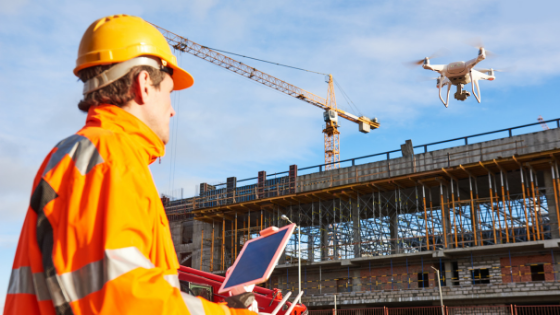The traditional safety inspection is going digital and the inspector is taking to the air.
Well, remotely, anyway.
Drones are becoming a common feature of everyday life, and it’s not just for recreational consumers or the military. In fact, drones are becoming increasingly common for safety inspections – OSHA even has a drone inspection policy.
Here’s how drone safety and drone-led inspections of high-risk areas can protect your workers.
Minimize Dangers, Maximize Data
One of the biggest benefits of drone inspections is that they allow you access to high-risk areas without risking your inspectors.
Let’s say you need to inspect an extremely tall structure. You could send a person up there with a harness and safety gear, but if anything were to go wrong, that person is in serious danger.
Or, you could keep your inspector safely on the ground and send in a drone with a camera and sensors. A drone, unlike a person, can handle being way up in the air. It also isn’t bothered by areas where there could be chemical or fire risks, like oil refineries, pipelines, or flare stacks.
Your workers can stay safely away from hostile environments while still providing a detailed safety inspection. It’s the best of both worlds.
More Accurate Mapping
Since drones are more adaptable in high-risk environments, drone inspections allow you much greater freedom when it comes to data collection.
And because you can collect more data in hostile areas, you can get far more accurate mapping capabilities.
Drones still need human expertise to guide them, but when equipped with the right sensors and piloted by the right person, they provide access to data that might have otherwise been impossible to reach. And since you still have a human on the ground, you still have human eyes assessing data for you.
Quick Deployment
Think about the process involved in getting a human inspector into a hostile environment.
You have to get all of the appropriate safety equipment. You have to make sure that they have their inspection standards ready. You have to make sure that they have protection in place if something goes wrong. You have to check the area to make sure the inspector won’t be in imminent danger.
It’s a lot of work, and even then, it’s not always enough to keep your inspector safe.
Drones don’t need any such preparation. They can go up quickly and easily, all with relatively little risk to the pilot or the inspector.
That means you can save time, get on with the inspection, and avoid any added risk for your team.
Improved Maneuverability
In addition, drones offer a level of maneuverability that a human inspector can’t.
On one hand, an airborne drone may have difficulty reaching certain areas that require a delicate human touch. On the other hand, they can also gain access to areas that human eyes may not be able to reach.
With the right cameras and sensors, a drone can collect just as much data as a human inspector could. They also have a much easier time accessing certain areas safely, like buildings that jut out at odd angles. The whim of that architect is dangerous to a person, but to a drone, it’s just an average flight.
Improving Drone Safety
Drone safety and drone-led inspections are just two small ways that technology is improving the health and safety industry. Start investing in the solutions of tomorrow and you'll begin to see an improvement in your safety culture.
